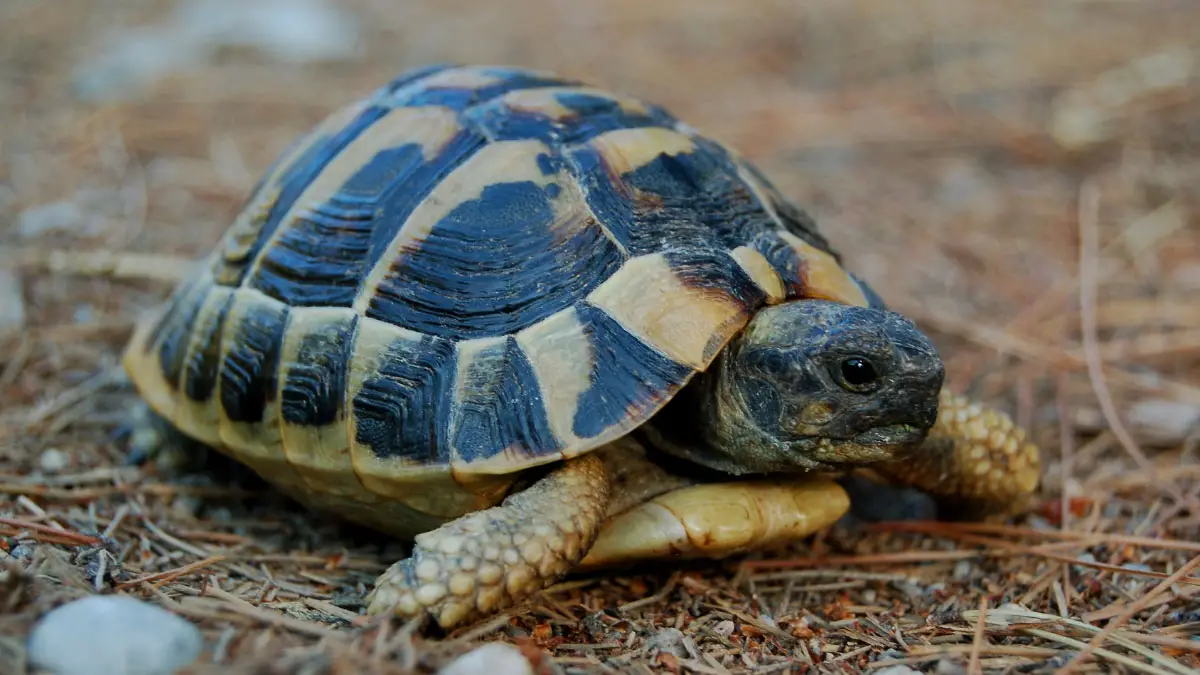How Long Does It Take For A Tortoise To Grow? (Various Species)
If you plan to keep a tortoise, it is essential to understand its growth dynamics, such as the growth and maturity rate of various species. These will help you select a suitable species depending on your time aspects.
So, how long does it take for a tortoise to grow? Most tortoise species take 5 to 10 years to reach maturity from the day they hatch. However, there are fast-growing species, such as the Indian Star, which take 3 years to grow full size. Others, such as the Sulcata tortoise, take 15 – 20 years to reach full body size.
This guide will review the duration different tortoise species take to grow. In addition, the article shall discuss the rate of growth and factors that affect their development. Keep reading for more information on the growth of tortoises.
How Long Does It Take For A Tortoise To Grow? (Various Species)
Contents
Most tortoises take 5 – 10 years to reach maturity and grow into their total body size. However, some species take longer while others may take shorter periods.
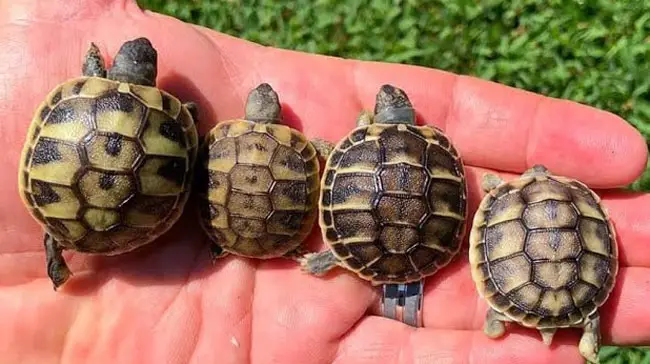
Different species grow and reach maturity at different times. Their growth is determined by several genetically determined factors and other physical and behavioral factors.
Below is a display of different torts species and their time to reach full body size.
| Tortoise Species | Time Taken To Reach Full Size |
|---|---|
| Aldabra Tortoise (Geochelone gigantea) | More than 30 years |
| Burmese Mountain Tortoise (Manouria emys) | More than 10 to 15 years |
| Egyptian Tortoise (Testudo kleinmanni) | 7 to 10 years |
| Elongated Tortoise (Indotestudo elongata) | 7 to 10 years |
| Greek Tortoise (Testudo graeca) | More than 10 years |
| Hermann’s Tortoise (Testudo hermanni) | 10 to 12 years |
| Horsfield Tortoise (Testudo horsfieldii) | 10 years |
| Indian Star Tortoise (Geochelone elegans) | Up to 3 years |
| Leopard Tortoise (Stigmochelys pardalis) | 12 to 15 years |
| Marginated Tortoise (Testudo marginata) | 20 years |
| Radiated Tortoise (Astrochelys radiata) | 16 to 21 years |
| Red Footed Tortoise (Chelonoidis carbonaria) | 10 years |
| Russian Tortoise (Testudo horsfieldii) | 20 to 30 years |
| Spider Tortoise (Pyxis arachnoides) | 6 to 12 years |
| Sulcata Tortoise (Centrochelys sulcata) | 15 to 20 years |
| Yellow Footed Tortoise (Chelonoidis denticulatus) | 10 years |
How Fast Does A Tortoise Grow? – (Example Of Sulcata Tortoise)
Different species have varying growth rates. Some mature fast, while others take up to 20 years before reaching their maturity level. Other species have fast growth phases interchanged with slow or no growth phases.
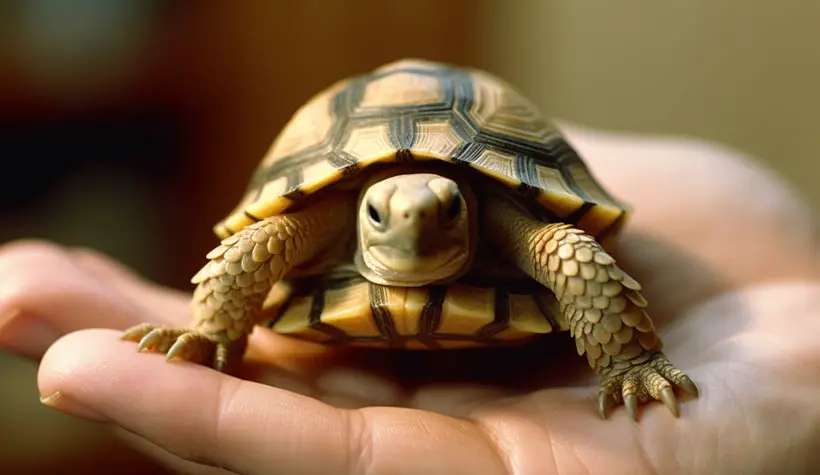
Let’s look at one unique species, namely the Sulcata tortoise, growth pattern from hatchling to understand better how fast torts grow. We shall use carapace length and the total weight to check the growth.
| Sulcata Tortoise Age | Carapace Length | Body Weight |
|---|---|---|
| Hatchlings (0 to 3 Weeks) | 1.5 – 2 Inches | 25 – 40 Grams |
| 3 Months | 2 – 2.5 Inches | 40 – 50 Grams |
| 6 Months | 2.5 – 3 Inches | 50 – 58 Grams |
| 1 Year | 6 – 8 Inches | 700 – 1,000 Grams |
| 3 Years | 10 – 15 Inches | 5 – 10 Kg |
| 5 Years | 10 – 20 Inches | 5 – 15 Kg |
| 10 Years | 20 – 24 Inches | 15 – 31 Kg |
| 15 – 20 Years | 26 Inches | 30 – 50 Kg |
From the above data, Sulcata tortoise hatchlings start at a carapace length of 1.5 inches, and by the end of one year, it grows to almost 10 inches. By reaching its full maturity age of 15 – 20 years, it has developed to between 24 and 26 inches.
Checking the weight can also help determine the growth rate. A Sulcata tortoise hatchling weighs 25 – 40 grams and grows to almost 1 kg within a year. When reaching maturity at 15 – 20 years, it weighs between 30 – 50 Kg.
These patterns are not constant for every species. If you notice a different pattern with your tortoise, seek help from an expert in your species.
How Can I Ensure A Healthy Growth Rate For My Tortoises?
Tortoises have a biologically controlled growth rate determined by each species’ genes. Therefore, it is not easy to hasten the growth rate of a tortoise with a significant amount.
However, you can implement the following practices to ensure growth at a healthy pace without delay.
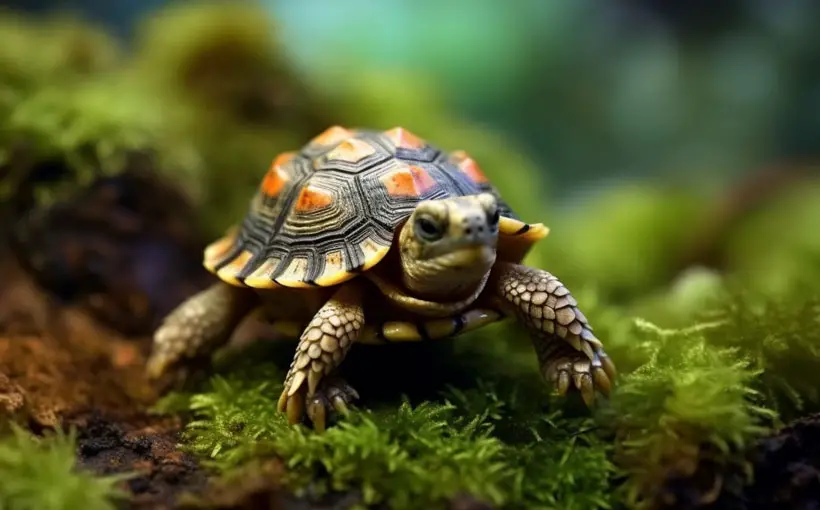
Provide A Secure And Spacious Compound
Tortoises require enough space to move around and exercise as they search for food. Ensure the place is secure with a perimeter wall for the case of those in captivity.
Torts living in the wild have no space limitations as they can move freely in the fields. The space is determined by the size of the tortoise and its population. With enough space, your torts will grow at a healthy pace.
Provide A Source Of Water
Tortoises need water to stay hydrated and cool their body—place water bowls in various positions for torts to drink and bathe in during hot weather.
Ensure the water is clean and sheltered from contaminating agents. Keep the water temperature at standard between 25-35 degrees Celsius.
Provide A Balanced Diet
Food is one of the critical elements of healthy growth for tortoises. You need to develop a feeding program that has a balanced diet for efficient development.
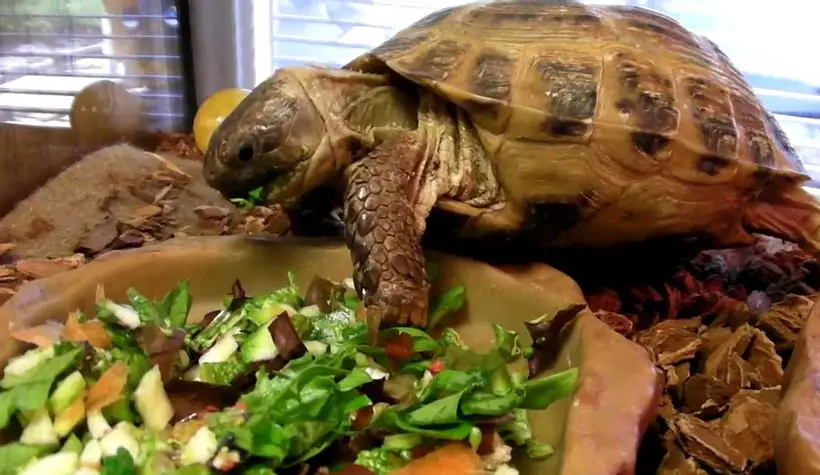
While in the compound, tortoises can feed on various plant nutrients and small insects. Supplementing their diet with rare nutrients from regular feeds, such as calcium and potassium, would be best.
Regular Veterinary Check-Ups
Like any animal, torts are also attacked by pests, parasites, and diseases that can inhibit their normal growth process. It is, therefore, essential to have regular visits to the vet for check-ups.
You should keenly follow deworming and vaccine schedules to keep your pet healthy.
Factors That Inhibit The Normal Growth Of Tortoises
As mentioned above, each tortoise species has a unique growth rate when all other elements are stable. Healthy growth may take 20+ years, while others mature within 3 to 5 years.
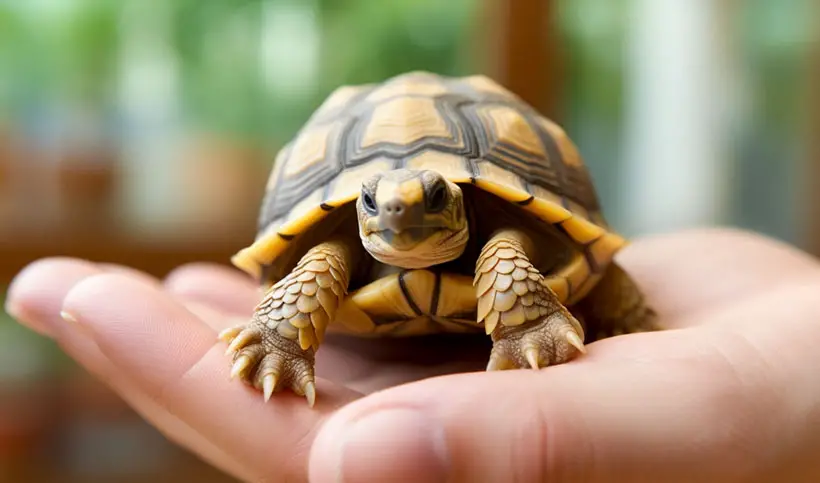
Here are factors that may interfere with such normal growth rates.
1. Genetic Composition And Species
Different species have different genetic compositions. Most tortoises inherit their growth rate and pattern from their parents. Species such as Sulcata have genes that take 15 to 20+ years to reach their maximum growth of 24 – 26 inches.
Some tortoise species, such as the Indian Star tortoise, mature quickly within 3 years after hatching.
2. Disease And Parasite Infestation
Tortoises are prone to illnesses and attacks by parasites due to their sophisticated body structure, with most parts hidden. Tortoises are prone to diseases such as Salmonella and Chlamydia that affect their gastro-intestines.
They are also attacked by parasites such as Nematode, which slows down the expected growth of tortoises.
3. Lack Of Sufficient UV Light
Tortoises need UV light to produce Vitamin D3, which is responsible for the calcium activation in its body. Calcium nutrient is responsible for the growth and development of strong bones and shells.
Therefore, the lack of enough UV light in their sheds causes the torts to have retarded growth with weak bones and shells.
FAQs
Let’s check the various questions asked about the growth of tortoises.
The growth of tortoises is slow and hardly detected by observation. Develop a record book to indicate changes in the carapace length and the weight from time to time with time intervals of 3 months.
Turtles have a slower growth rate than tortoises, registering an average growth rate of 1 – 2 cm per year. Tortoises on the other hand have an average of 3 – 4.5 cm per year depending on the species.
Some species are slow growers and may take up to 5 years before increasing in length.
Check with a vet to determine if they have any underlying condition inhibiting its growth. If not, give them time with proper care, and you will start recording growth.
Conclusion
Tortoises have an average of 5 – 10 years to grow into full body size from the day of hatching. However, some species are fast growing and attain full body size in three years, while others, such as Sulcata, take 15 – 20 years.
The growth and development of torts depend on their genetic composition, care and maintenance, and environment. Therefore, ensure you give the best care and feed them properly for a healthy growth pace. Also, consult your vet if you notice any unusual growth regarding your pet’s normal growth rate.

